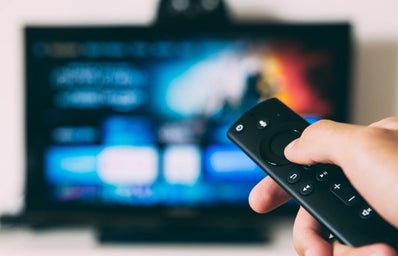When I watch movies and shows about people with disabilities, I use them as windows into their lives so I can gain a better understanding and be better informed of my able-bodied privilege. Internally, I praise the cast and crew for shining a spotlight on these stories. But recently, I have started to ask myself: what parts of their stories are being broadcasted, what methods are being used to tell them, and what implications does this have on the real-life community of people with disabilities? That is where it starts to get problematic as certain tropes get employed, tropes that have become extremely common and that we may not realize can be extremely harmful. Up ahead are just some examples of such tropes. (Warning: spoilers for shows and movies such as “Me Before You,” “Million Dollar Baby,” and “Supernatural”!)
Played by an able-bodied actor:
Artie in “Glee” and Stephen Hawkins in “The Theory of Everything” are just two examples, but this trope has become so commonplace, we hardly bat an eyelash when we see it. Time and time again, actors jump at the bit to get these roles in order to show off their acting chops and gain esteem, frequently even winning an award. And I am not discrediting their work because they usually do succeed in putting on very realistic and compelling performances. However, in doing this, the lives of people with disabilities are being exploited in order to progress able-bodied people’s careers. Hollywood bars actors with disabilities from playing able-bodied characters, and it bars them from telling their own stories. People with disabilities are already so marginalized and often have to fight to be heard or taken seriously, and this trope just further perpetuates this by suggesting a third party needs to speak for them. Not to mention, if directors cared about authenticity, it does not get more authentic than casting someone who actually has that disability. For instance, Walt Jr. in “Breaking Bad” and the daughter in “A Quiet Place” are both played by actors that have the same disability as their characters, and both put on fantastic performances that only progress the rest of the plot.
Disability is magically healed:
One example of this is in “Supernatural.” In the fifth season, Bobby is paralyzed after a fight with demons and remains in a wheelchair for the majority of the season. However, in the penultimate episode, his paralysis is healed in order for him to be able to take arms in a big battle. While this may not seem offensive on the surface, it implies that his disability was something that needed to be taken away in order for him to make a meaningful contribution. It suggests that the disability was a problem, a burden upon the character or those around him. Having it disappear works against normalizing disabilities by suggesting that the superior version of an individual is one that looks more like the majority able-bodied population. This is not to say that disabilities don’t present very real challenges, but a life with a disability is much more nuanced and complex than I as an able-bodied person can ever hope to fully grasp. Furthermore, real people with disabilities cannot just make theirs magically disappear—and they do not need to. They are not pitiful victims to be fixed. Their capabilities are not defined by their disability; many times, it plays a part in it, but they are people with their own talents that exist alongside their disability.
Better dead than disabled:
This trope goes a step beyond the magical healing one. It is seen in movies such as “Me Before You” and “Million Dollar Baby,” and is where a character opts for euthanasia because life with a disability is too painful and tormenting for them to want to live it. Their disability is painted as a fate worse than death, with no way to escape it. Many members of the disabled community even protested “Me Before You,” with the hashtag #MeBeforeEuthanasia. Actor and activist Liz Carr described the discrepancy in suicide prevention among able-bodied people and people with disabilities, saying to The Guardian, “When a disabled person talks of [suicide], though, suddenly the conversation is overtaken with words like ‘choice’ and ‘autonomy’ and people are rushing to uphold these prized principles, whilst talk of prevention and mental health support are rare.”
Euthanasia is a complex and multifaceted topic; the main issue is not its presence in these movies but the way it is painted as the only option for people with disabilities to find peace. These movies push the audience to look at these cases as tragic yet understandable, inevitable even. They imply that people cannot live fulfilling lives with their disability and contribute to the stigma that these individuals should be pitied by the general population. While disabilities may present their own sets of obstacles that should not be belittled, they are far from a death sentence and must stop being treated as such. A great number of people with disabilities go on to live long, healthy, and successful lives, with their disability only serving as one piece of their multidimensional identity.
Inspiration:
Also termed Inspirationally Disadvantaged, this is when a character with a disability is used as a source of inspiration or motivation for those around them. For instance, the movie “Radio” revolves around Harold Jones, a football coach in a small town, and his relationship with James Kennedy, nicknamed Radio, who is a young man with a developmental disability. Radio brings the town together and Coach Jones credits him for teaching himself and the town more than they taught him. Film critic Richard Roeper said, “[‘Radio’ is] yet another movie that takes a mentally challenged character and turns him into this kind of deity, this saint-like mascot who everybody else learns life lessons from.”
Now, there is nothing wrong with having admiration for a person’s kindness or how they overcome their struggles. The problem is when the character with the disability only exists for the function of providing inspiration for other characters, sidelining them in their own story, and turning them into a tool rather than a human being. Additionally, placing people with disabilities on a pedestal can be just as harmful as looking down on them. The late journalist and activist Stella Young, who was born with a genetic disorder and used a wheelchair, said in a TED talk, “Yeah, we’ve been sold the lie that disability is a Bad Thing, capital B, capital T. It’s a bad thing, and to live with a disability makes you exceptional. It’s not a bad thing, and it doesn’t make you exceptional.” Excessively praising people simply for having disabilities does not do them a service; it is just another way of alienating them. They do not exist to teach a lesson to others or to be a hero. They simply wish to be seen as people.
Bullying a disabled person:
This is usually either done to demonstrate just how cruel the bully is or so the main character can have their big moment as the hero in the situation. One example of this is in the movie “Shazam!” with Freddy, who uses crutches. Admittedly, the movie does go on to subvert a number of disability tropes: Freddy is accepted by his family as a whole person, not in need of healing, has a fair amount of screen time in which he is making substantial contributions to the plot of the story, and generally shows autonomy. However, his main personality trait is still his suffering from his disability. He is relentlessly bullied for it no matter what he does. When the main character, Billy, stands up for him, it is a moment that shows Billy’s assertiveness, and the chain of events that directly follow lead to him gaining powers. It becomes Billy’s moment rather than Freddy’s.
While bullying does occur in real life, how it is depicted, and how the character is used makes a big difference. Oftentimes, the instances in which this trope is utilized suggest that these individuals need saving and cannot do anything for themselves, building a savior complex in able-bodied people with regard to people with disabilities. The trope also implies that ostracism inherently goes hand-in-hand with disabilities, which normalizes the maltreatment and exclusion. This might be side-stepped if the character is given their own arc, is able to stand up for themselves, or if the focus is entirely on the character with the disability rather than the bully or the character that “saves” them.
Remember, there is no shame at all in enjoying these movies and shows, and not initially perceiving them as harmful does not make you an insensitive person. I personally was a big fan of many of these movies and shows, and the ableist undertones flew right over my head. It is just good to be aware of the stereotypes these kinds of movies and shows perpetuate, and how they might be influencing your perceptions of and interactions with real people with disabilities. They are three-dimensional human beings that have good, normal lives that they themselves can attest to—which is a truth that we should not need to be reminded of. Those with able-bodied privileges, such as myself, have the responsibility to recognize their privilege and correct themselves to be a stronger ally.


